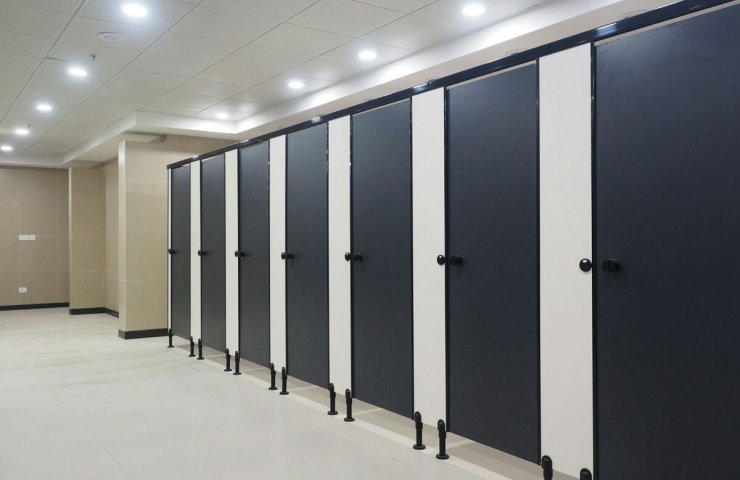Sanitary partitions
The processing of data obtained in the course of anti-epidemic measures in the fight against coronavirus showed that this attribute really helps to reduce its spread. Various kinds of partitions:
- In public toilets, including between men's urinals.
- At customer service points, when settlement occurs simultaneously at several nearby cash desks.
- In showers, fitness centers, gyms and swimming pools.
- In offices between the desktops of employees working in the same room.
They are quite an effective obstacle preventing the transmission of infection (virus) from an infected "carrier" to a nearby (due to circumstances) healthy person.
Design features and quality requirements
The presence of the most diverse, lightweight, not expensive, or, on the contrary, exclusive materials and accessories, allows us to make partitions from them, taking into account the parameters of their future use. For example, toilet cubicles that completely hide a person or transparent office structures. In this case, the manufacturer takes into account:
- Room design.
- Customer's budget.
- Ability to quickly dismantle for redevelopment.
And one more, very important parameter. Partitions should be made of facing materials that fully comply with the safety parameters for life and health:
- Does not emit harmful toxic substances in case of heating or fire.
- Resistant to moisture and chemically active substances.
The structure, as a rule, is arranged in a way that is practical for washing and disinfection (there are no voids between mating parts, pockets and places of loose fit where mold or mildew may form).
You can get acquainted with examples of ready-made (commissioned) partitions, as well as materials that were used during assembly, using the site sigma-peregorodki.ru - a company that carries out their manufacture and professional installation. The order of the required option can be carried out directly on the resource; the option "Manager's Call" is available to clients, available without prior registration.
